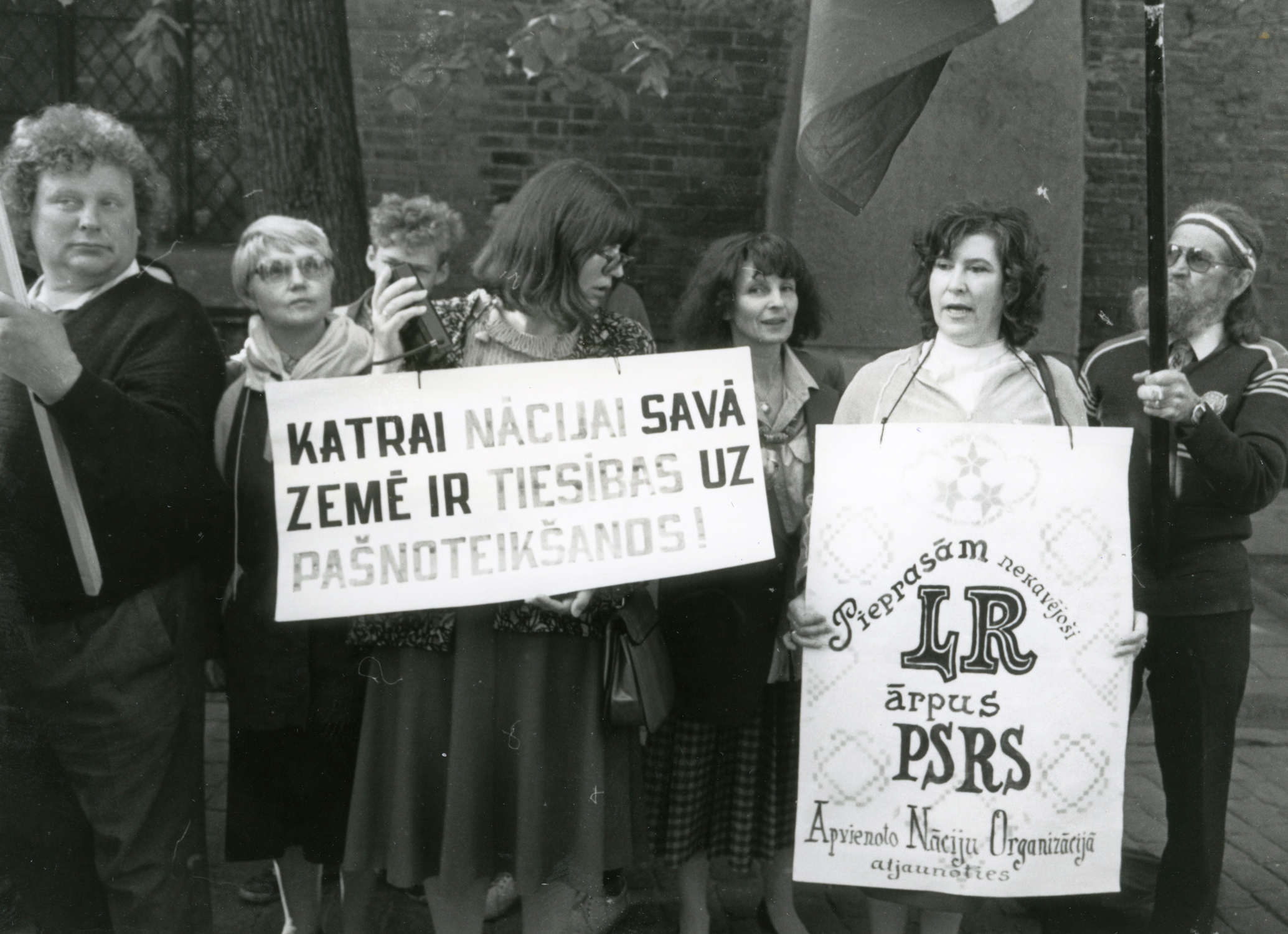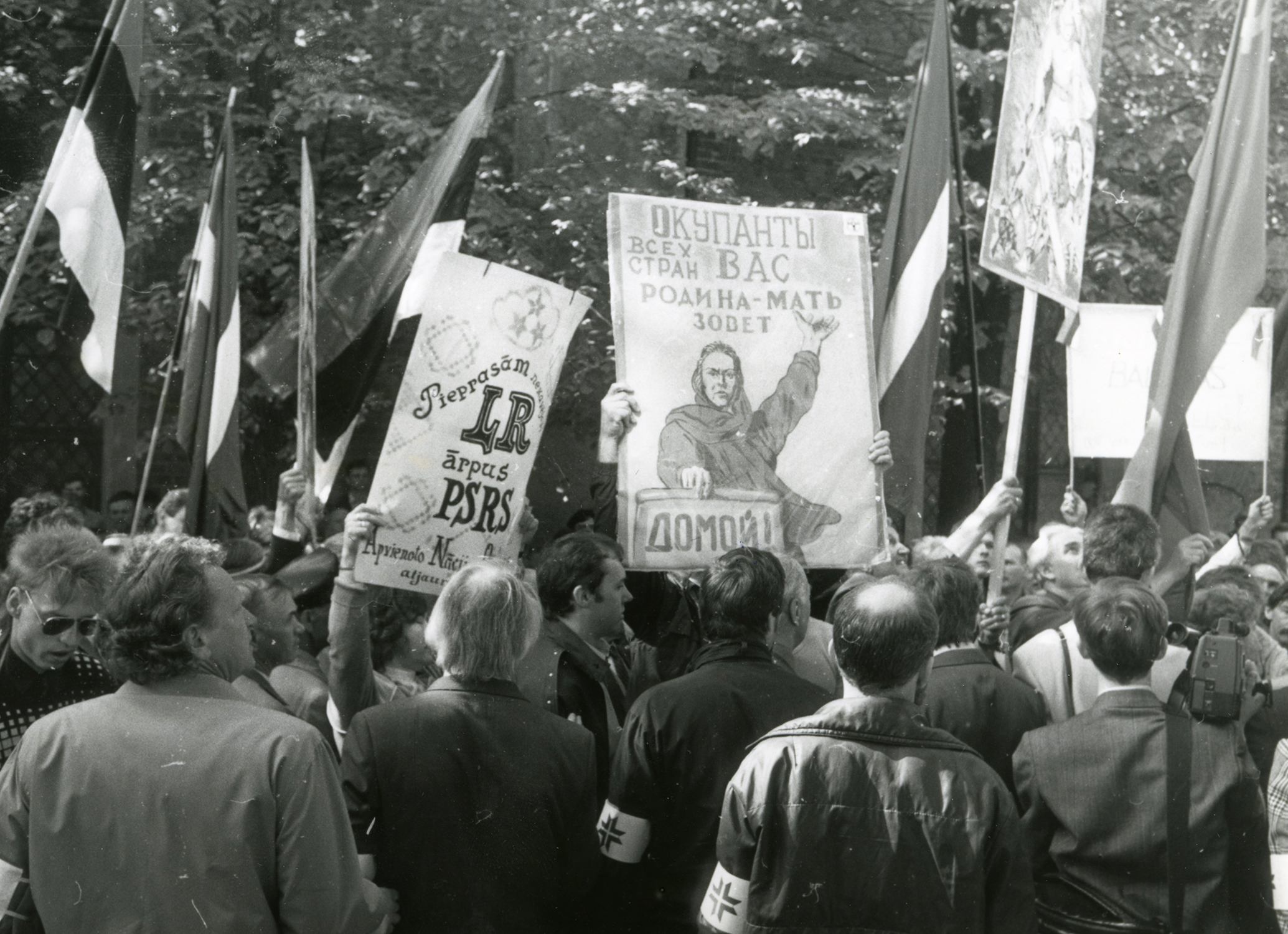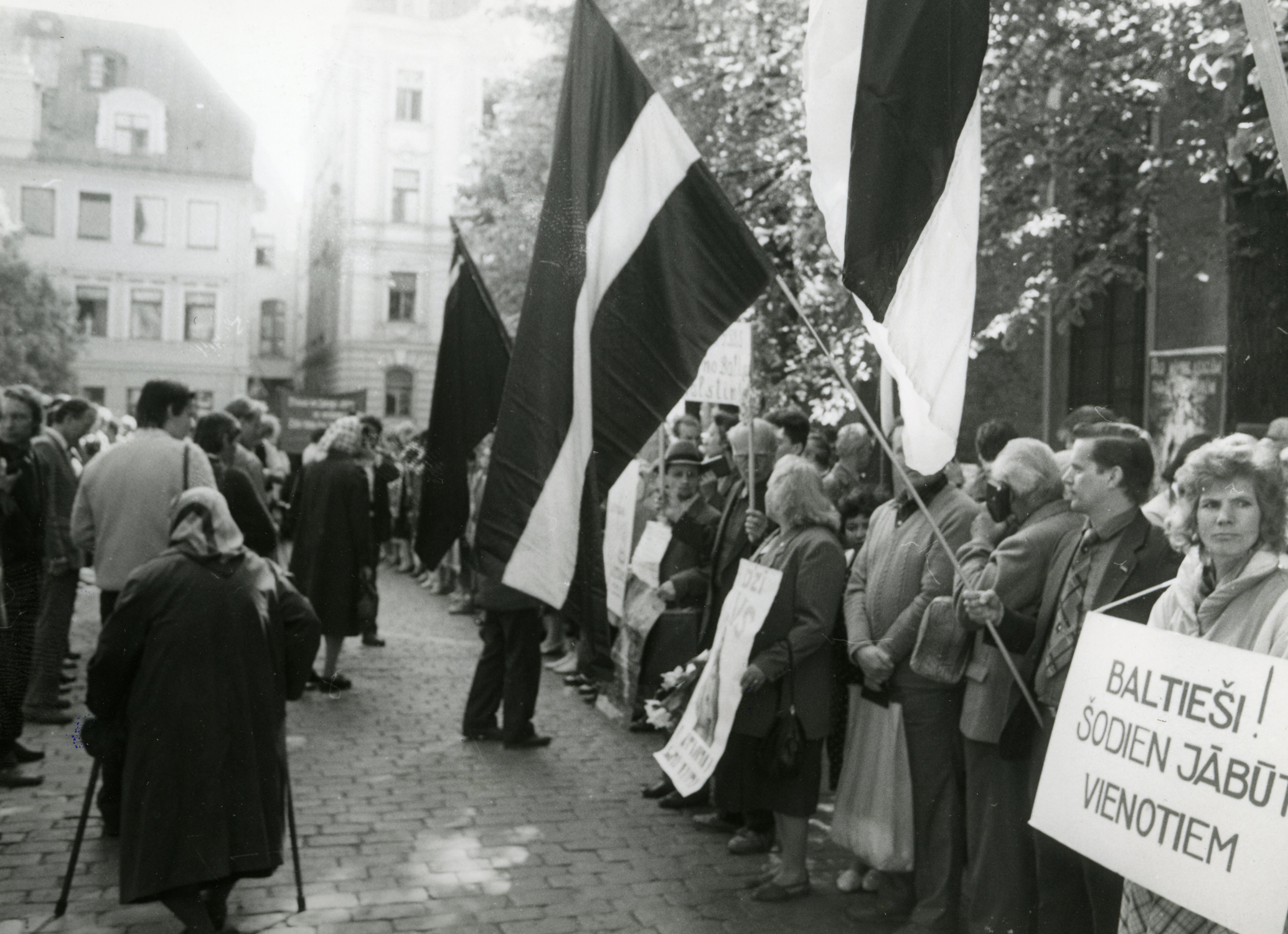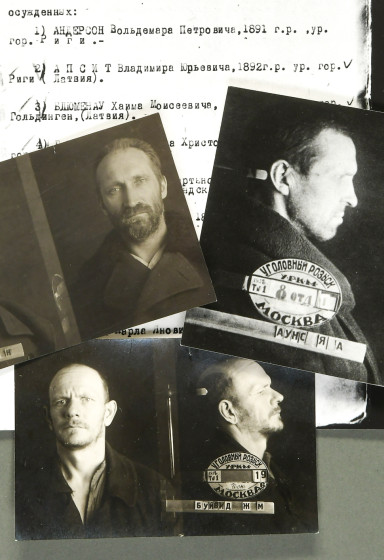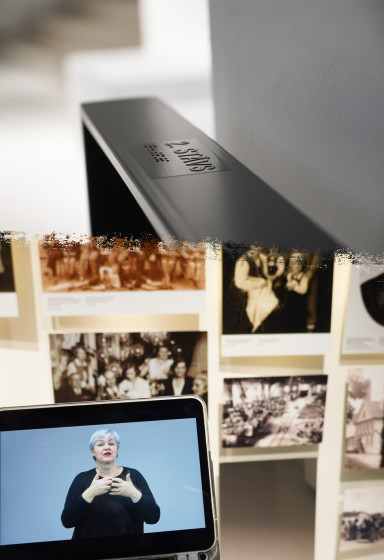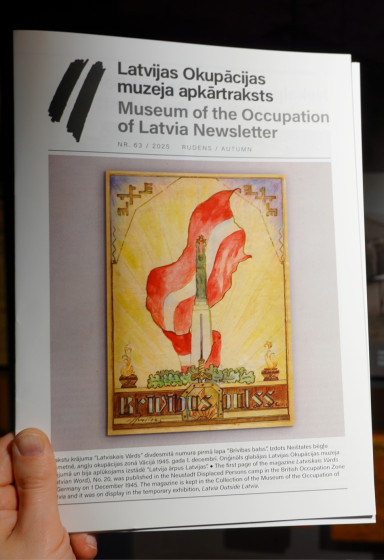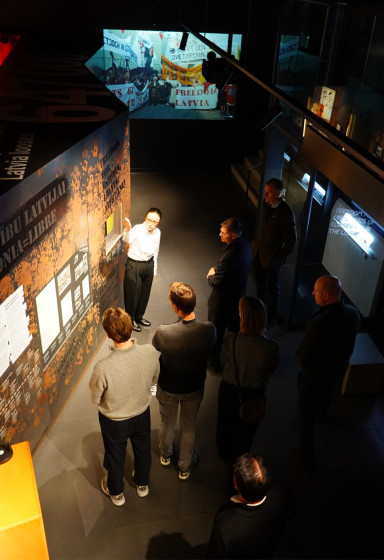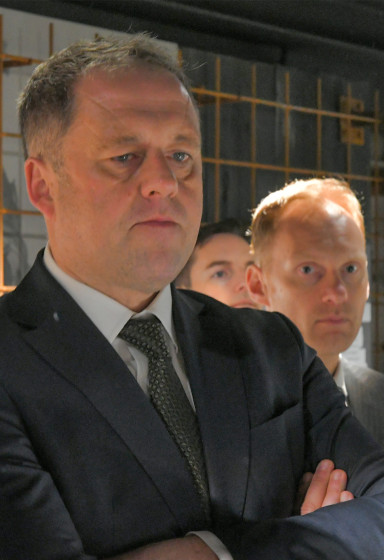Donate to Museum
Each donation helps to ensure the Museum's activities, allowing it to function and provide information for people from all over the world.
The Museum is grateful to each donor and invites everyone to contribute.
May 4th – Restoration of Independence of the Republic of Latvia
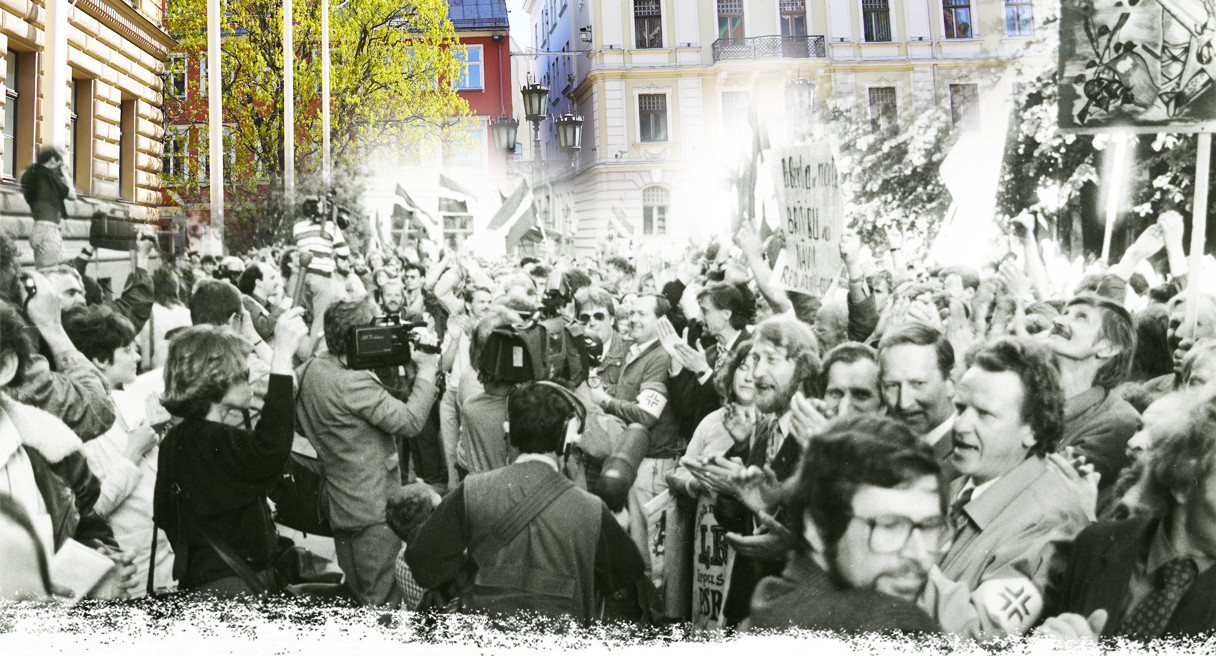
In the Soviet Union’s 1990 regional elections, parties other than the Communist Party were permitted to take part for the first time in Soviet history. This was part of USSR Premier Mikhail Gorbachev’s liberalising policies. In occupied Latvia, on 18 March 1990, a non-Communist majority of deputies was elected to the Latvian SSR Supreme Council (or Soviet), the local parliamentary structure.
The idea of restoring Latvian independence, outlined in a proposed parliamentary declaration, quickly gained momentum. To further this, on 21 April 1990 the Latvian People's Front held a national meeting of deputies at Daugava Stadium in Rīga, which was attended by 8086 deputies of all levels. Over 8000 voted in favour of continuing to move the declaration forward.
On 4 May 1990, the Latvian SSR Supreme Council adopted the ‘Declaration on the Restoration of Latvia's State Independence’ with 138 out of 198 votes in favour. Deputies who did not support the Declaration did not take part in the vote. Paragraph 5 of the Declaration provided for a transitional period between the activities of the Supreme Council and the convocation of the Saeima (the Latvian parliament): ‘To establish a transitional period for the de facto restoration of the State power of the Republic of Latvia, which shall end with the convocation of the Saeima of the Republic of Latvia.’ May 4th was a psychological watershed, marking a turning point in attitudes towards the idea of independence. It was not a declaration of independence, which at that point was not possible.
The preamble to the Declaration included a clause stating that Latvia’s Constitution of 15 February 1922 was still in force de jure. The Declaration detailed the historical situation of 1940, when the Soviet occupation began, and pointed out that the 1940 elections were illegal, meaning that ‘the Republic of Latvia still exists de jure as a subject of international law, recognised by more than 50 countries around the world’. Latvian exiles in Western countries were actively involved in promoting the text of the Declaration, informing the world community about the events in Latvia.
The transitional period ended abruptly on 21 August 1991, with the collapse of a Soviet Communist coup attempt in Moscow, when the Latvian Supreme Council quickly adopted the constitutional law ‘On the State Status of the Republic of Latvia’, declaring de facto complete independence. Since 9 April 2002, May 4th has been established as a public holiday.
ON MAY 4 – FREE ENTRY TO THE MUSEUM
Crows in front of the Supreme Council of the Latvian SSR awaiting the deputies endorsement of the declaration to restore the independent Republic of Latvia. Riga, 4 May 1990.
Photos: Igors Vārpa.
Collection of the Museum of the Occupation of Latvia.

